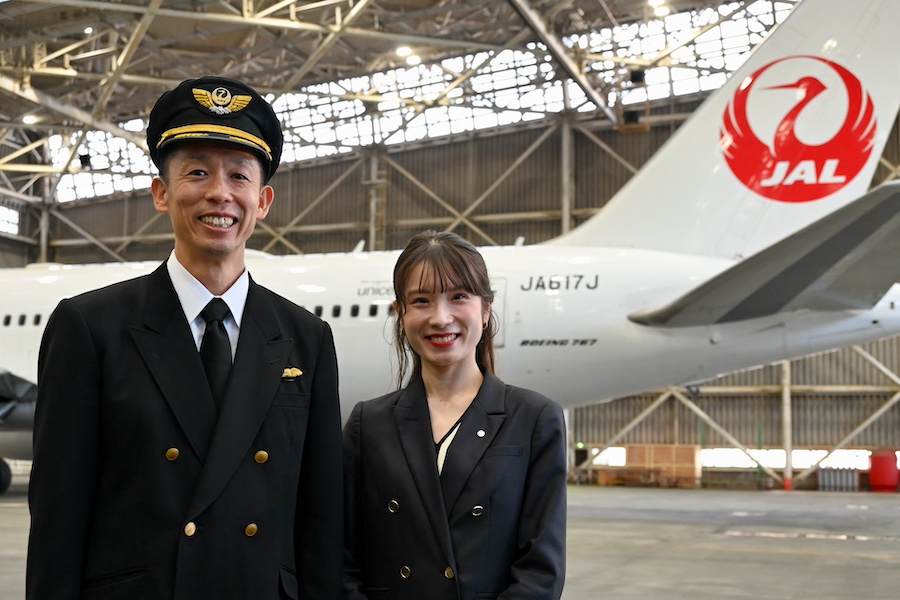
Qatar Airways and Air Algérie to Launch Codeshare on November 15
Japan Airlines (JAL) operated a charter flight to commemorate the 40th anniversary of the Boeing 767 entering service in Japan.
The event spanned two days, October 31 and November 1. On day one, participants toured a 767-300ER in a hangar at Narita Airport and heard briefings from flight crew and maintenance technicians. Day two featured an actual flight designed to let participants experience the aircraft’s performance and characteristics firsthand. Fares were set at 91,700 yen for Business Class and 76,700 yen for Economy Class. According to JAL, 890 people applied, yielding odds of about 5.9 to 1.
On November 1, 148 people joined the charter flight. The assigned aircraft was a 767-300ER (registration JA617J). It pushed back from Spot 68 at Narita Airport at 11:01 a.m., and, with the 767’s hallmark “dokkan” power takeoff—a rapid, high-thrust climb—departed Runway A at 11:23. The flight first headed north, passed near Niigata City, then turned southwest toward the vicinity of Kanazawa City before proceeding south. Over the Japanese Alps, it traced “767” in the sky with its flight path. It then exited over the Pacific near Hamamatsu City in Shizuoka Prefecture and returned to Narita, landing on Runway A at 1:44 p.m. Instead of taxiing to the terminal, the aircraft proceeded to the southern cargo area and paused in front of JAL’s hangar. It was then towed by a tug into the hangar, arriving at 2:09 p.m.
In addition to two operating pilots and eight flight attendants, two more pilots and three additional flight attendants joined the charter to interact with participants. The three non-duty flight attendants welcomed passengers wearing historical JAL uniforms: the sixth-generation uniform from 1985, when the 767 was introduced; the seventh-generation uniform used from 1988 to 1996; and the eighth-generation uniform used from 1996 to 2004.
During the flight, there was a talk show with operating crew and flight attendants (CA), as well as a quiz competition featuring questions written by pilots and maintenance engineers. One flight attendant shared, “Before joining the company I preferred the 787 and A350, but after starting work I became a huge fan of the 767 for how easy it is to work on and its powerful climb.” The quiz posed 20 tough questions, such as: “Which engine parameter can only be measured in the test cell at the Engine Maintenance Center?” and “How many ordinary Japanese households (30-amp service) could one 767 generator power?”
After arrival, inside the hangar, the quiz results were announced and winners were honored. No one achieved a perfect score, but two participants answered 19 out of 20 correctly, underscoring the group’s deep affection for the 767.
The event was organized by Captain Shinjiro Suzuki, a flight training instructor in the 767 Training Office of JAL’s Flight Operations Training Department, and Mayu Miyoshi of the Operations Group in the 767 Flight Crew Department. Captain Suzuki, who conceived the event so that participants and employees could celebrate the 767’s 40th anniversary together, commented, “The 767 has flown for 40 years thanks to our customers. We planned this because we wanted to bring them joy.” Miyoshi, who normally creates flight crew schedules and was planning an event for the first time, added, “We coordinated with many stakeholders, including maintenance and airport teams, and crafted the event with one goal: for our customers to have fun.”
Regarding the plan to bring the charter directly into the hangar, advance consultations with Narita International Airport (NAA) and others went smoothly. “Narita has a large number of 767 operations and was very receptive,” said Captain Suzuki.

▲ Captain Shinjiro Suzuki (left), Flight Training Instructor, 767 Training Office, Flight Operations Training Department, JAL, and Mayu Miyoshi, Operations Group, 767 Flight Crew Department, who planned the event
JAL took delivery of its first 767, a 767-200 (registration JA8231), on July 23, 1985, and launched first revenue service on November 1 that year on the Tokyo/Haneda–Fukuoka route in Japan. Today the airline operates a fleet of 27 767s: 24 767-300ERs (the stretched, extended-range variant) and 3 767-300BCF dedicated freighters.